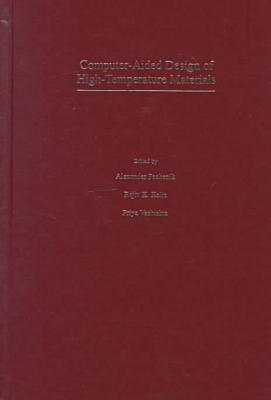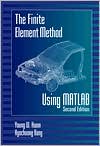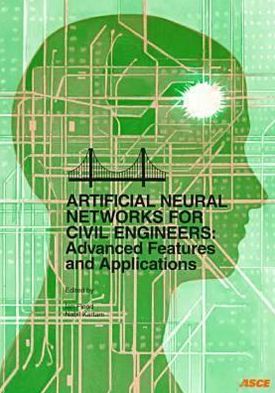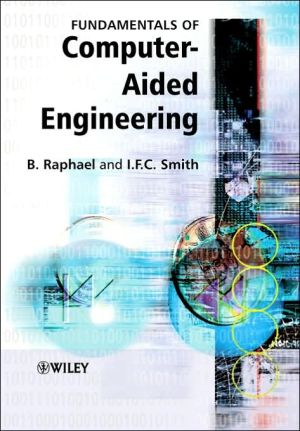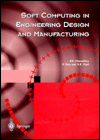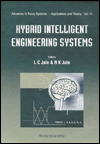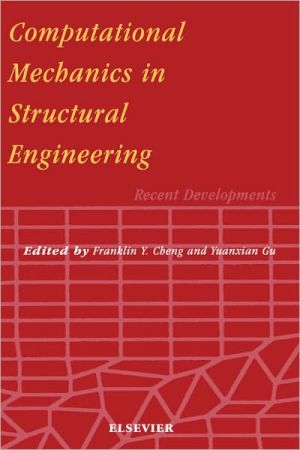Computer-Aided Design of High-Temperature Materials (Topics in Physical Chemistry)
This volume collects recent work from experimental and computational scientists on high-temperature materials and emphasizes the potential for collaboration. It features state-of-the-art materials modeling and recent experimental results.
Search in google:
High-temperature materials is a fast-moving research area with numerous practical applications. Materials that can withstand extremely high temperatures and extreme environments are generating considerable attention worldwide; however, designing materials that have low densities, elevated melting temperatures, oxidation resistance, creep resistance, and intrinsic toughness encompass some of the most challenging problems in materials science. The current search for high-temperature materials is largely based on traditional, trial-and-error experimental methods which are costly and time-consuming. An effective way to accelerate research in this field is to use recent advances in materials simulations and high performance computing and communications (HPCC) to guide experiments. This synergy between experiment and advanced materials modeling will significantly enhance the synthesis of novel high-temperature materials. This volume collects recent work from experimental and computational scientists on high-temperature materials and emphasizes the potential for collaboration. It features state-of-the-art materials modeling and recent experimental developments in high-temperature materials. Topics include fundamental phenomena and properties; measurements and modeling of interfacial phenomena, stresses, growth of defects, strain, and fracture; and electronic structure and molecular dynamics.
Creep of Silicon Nitride3Grain Boundary Chemistry and Creep Resistance of Alumina18The Structures of Liquid Yttrium and Aluminum Oxides34Creep Damage Processes in Structural Ceramics: Experimental Studies and their Implications for Computational Modeling47Insights on Deformation Mechanisms from Atomistic Modeling of Structural Instability in Solids55Molecular Dynamics Simulation of the Sintering Process of [beta]-SiC Nanoparticles67Dynamic Fracture in Nanophase Ceramics and Diamond Films: Multimillion Atom Parallel Molecular-Dynamics Simulations81Scaling Phenomena in Crack Propagation105Effect of Small Aluminum Additions on Mechanical, Elastic and Structural Properties of Monocrystalline C11[subscript b] MoSi[subscript 2]121Nearly Singular Fields: Electrostatics and Elastostatics of Composite Materials131Energy Minimization and Nonlinear Problems in Polycrystalline Solids139Influence of the Interface on the Thermal Conductivity of Composites Containing Perfectly Conducting or Perfectly Insulating Particles149Coarsening of Directionally-Solidified Eutectic Microstructures163Fingering Instability in Dislocation Motion183An Alternative Mechanism for the Formation of Split Patterns of [gamma]' Precipitates in Ni-Al Alloys187Directional Solidification of Eutectic Ceramics197Computer Simulation of Microstructural Evolution under External Stresses212The Weak Interface Between Monazites and Refractory Ceramic Oxides229Structural Correlations and Stress Distribution at Silicon/Silicon Nitride Interface244Neutron-Scattering Studies of Nitride, Oxide, and Phosphate Ceramics and Their Relationship with Molecular Dynamics Simulations of High-Temperature Properties256Neutron Scattering Characterization of Microstructure in Uranium Silicides, Ceramic Composites and Ni-Based Alloys267Fundamental Studies of Surfaces and Interfaces at High Temperature via Microdesigned Interfaces277Analytic Bond-Order Potentials: Bridging the Electronic-Atomistic Length-Scale Gap295Ab Initio Calculations of Interfaces in Materials: Grain Boundaries in SiC and SiC/Al Interfaces307Structure and Dynamics of Consolidation and Fracture in Nanophase Ceramics via Parallel Molecular Dynamics323Interfaces in Oxide Fiber-Oxide Matrix Ceramic Composites333Hybrid Classical and Quantum Modeling of Defects, Interfaces, and Surfaces350First-Principles Pseudopotential Data Base of Silica365Structural Correlations in Amorphous SiO[subscript 2] at High Pressures374Development of a Variational Augmented Plane Wave Method and Its Application to the Electronic Structure of Ionic Compounds384Band-Theoretical Approach to the Superionic Conductivity of Solid Electrolytes393The DOE Accelerated Strategic Computing Initiative: Challenges and Opportunities for Predictive Materials Simulation Capabilities402Collaborative Virtual Reality Environments for Computational Science and Design410Multilevel Algorithms for Computational High-Temperature Materials Research422Modified Gauss Point Method and Its Application in HTMS429Issues Involving Structural Stabilities in Multilayered Materials and Intermetallic Compounds439Recent Advances in High Performance Computer Simulations for Materials Science455Multiscale Modeling of Polycrystalline Covalent Ceramics461High Temperature Thermal Property Prediction for MgO, KCl and ZnS473Failure of Herring's Sintering Law at the Nanoscale483Atomistic Simulation of MEMS Devices via the Coupling of Length Scales491Thermoelastic Properties of Layered Perovskites: A Non-Empirical Density Functional Theory Approach506Index521
